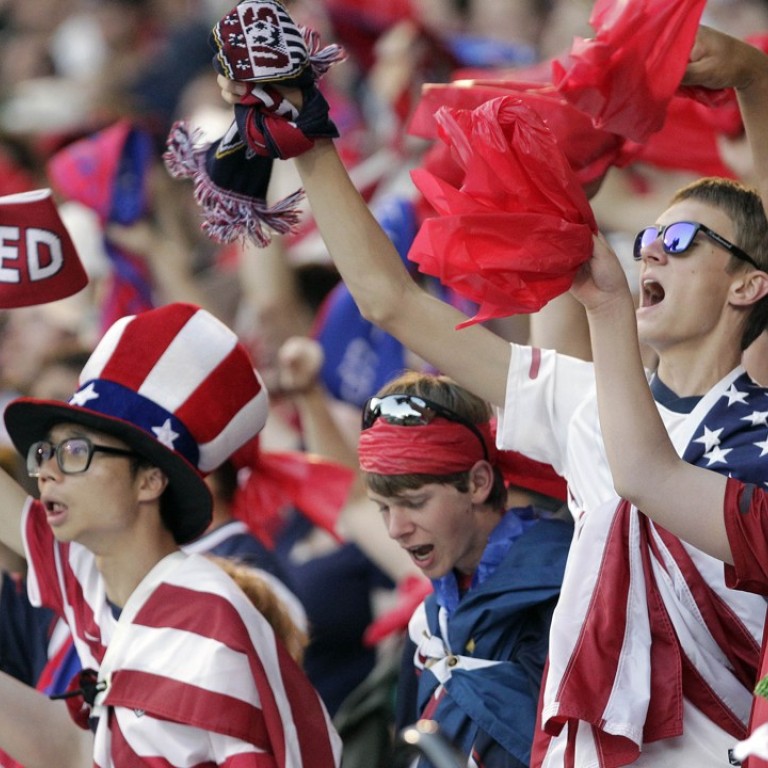
Why the US dollar is winning the currency World Cup
Neal Kimberley says the Federal Reserve’s proactive approach to monetary policy and changes to US tax laws have bolstered the currency
“If there is a trade war, investment related to outsourcing will stop and investment will take place in the US instead, though consumption and trade will suffer,” wrote Stephen Li Jen, of London-based Eurizon SLJ Macro, last week. “If, on the other hand, there is no trade war, the improved prospect of exporting to China should also help the investment environment in the US.”
Jen’s view is that the greater likelihood is that Beijing and Washington will avoid a full-blown trade war and that the possibility of the emergence of “a global trading system that is freer and fairer should lead to a surge in investment in the US, flattering its potential growth rate”.
Many might disagree with that view but few could deny that the economic data emerging from the US remains healthy, even after seven rate hikes from the Fed that began back in late 2015. Indeed, more rate rises are in the offing, which may only enhance the attraction of a US dollar which, as Jen wrote, “is now the highest-yielding currency among the G10”.

Indeed, “with the [US] economy strong and risks to the outlook balanced, the case for continued gradual increases … remains strong,” said Federal Reserve chief Jerome Powell last week.
In football terms, while the Fed has adopted an attacking formation, other central banks are in catenaccio mode, an Italian soccer system where defence is key
The Fed may have hiked its rate seven times, but in real terms its benchmark rate is still negative.
In football terms, while the Fed has adopted an attacking formation, other central banks are in catenaccio mode, an Italian soccer system where defence is key. The greenback should benefit as a consequence.

However, such defensive monetary stances might make sense as, outside the US, economic performance is a little patchy, a point picked up on by US bank Goldman Sachs on June 20.
“The broad US dollar tends to perform poorly when the global economy performs well,” the bank wrote, but “lately, however, non-US growth expectations have come down, while the Fed has carried on hiking” and “what was a mildly negative US dollar backdrop turned more clearly positive”.
“Solid US growth, Fed hiking and weaker non-US activity are the standard recipe for US dollar strength,” the bank concluded.
But that’s not all. Outside the US, the supply of dollars has become tighter. As HSBC noted on Friday, there has been a steep rise in the US dollar three-month Libor rate, highlighting “the tightening in offshore dollar funding conditions”, though the move has stalled recently. However, “the three-month US CD [certificate of deposit] rate has barely budged, implying that banks that fund themselves from deposits in the US have not seen an equivalent rise in costs”.
Watch: Why Hong Kong pegs its currency to the US dollar
Regulatory issues might explain part of the divergence but HSBC feels that “changes in US tax law enacted last year, which makes it less costly for American companies to repatriate profits held offshore” may also be playing a role. “Foreign earnings retained abroad by US companies turned sharply negative in the first quarter of this year”, the bank wrote.
Further, the bank estimated that around US$158 billion in overseas profits was brought back to the US, plus some US$50 billion or so ordinarily retained abroad. A swing of that size, HSBC argued, means “a lot less cash sloshing around overseas to be lent on, and a lot more stashed in US bank accounts or otherwise now floating through the US financial system”.
In the currency World Cup, with such strength in depth, it’s the US dollar that is the current champion. It’s unlikely to be knocked off that pedestal any time soon.
Neal Kimberley is a commentator on macroeconomics and financial markets

